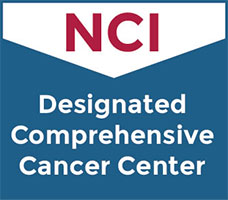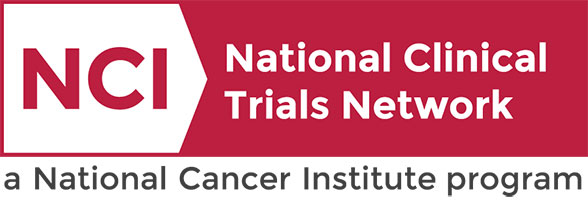Careers at Vanderbilt-Ingram Cancer Center
Vanderbilt-Ingram Cancer Center is a leader in the prevention, diagnosis and treatment of cancer. The center's world-renowned team of experts provides an integrated, personalized and patient-centered approach to cancer care, including treatment, research, support, education and outreach. From a wide variety of wellness programs to a leading REACH for Survivorship Clinic, patients find support from diagnosis through survivorship.
Wilms Tumor and Other Childhood Kidney Tumors
- Childhood kidney tumors are diseases in which malignant (cancer) cells form in the tissues of the kidney.
- There are many types of childhood kidney tumors.
- Wilms Tumor
- Renal Cell Cancer (RCC)
- Rhabdoid Tumor of the Kidney
- Clear Cell Sarcoma of the Kidney
- Congenital Mesoblastic Nephroma
- Ewing Sarcoma of the Kidney
- Primary Renal Myoepithelial Carcinoma
- Cystic Partially Differentiated Nephroblastoma
- Multilocular Cystic Nephroma
- Primary Renal Synovial Sarcoma
- Anaplastic Sarcoma of the Kidney
- Nephroblastomatosis is not cancer but may become Wilms tumor.
- Having certain genetic syndromes, other conditions, or environmental exposures can increase the risk of Wilms tumor.
- Tests are used to screen for Wilms tumor.
- Having certain conditions may increase the risk of renal cell cancer.
- Treatment for Wilms tumor and other childhood kidney tumors may include genetic counseling.
- Signs of Wilms tumor and other childhood kidney tumors include a lump in the abdomen and blood in the urine.
- Tests that examine the kidney and the blood are used to diagnose Wilms tumor and other childhood kidney tumors.
- Certain factors affect prognosis (chance of recovery) and treatment options.
Soft Tissue Sarcoma
- Childhood soft tissue sarcoma is a disease in which malignant (cancer) cells form in soft tissues of the body.
- Soft tissue sarcoma occurs in children and adults.
- Having certain diseases and inherited disorders can increase the risk of childhood soft tissue sarcoma.
- The most common sign of childhood soft tissue sarcoma is a painless lump or swelling in soft tissues of the body.
- Diagnostic tests are used to diagnose childhood soft tissue sarcoma.
- If tests show there may be a soft tissue sarcoma, a biopsy is done.
- There are many different types of soft tissue sarcomas.
- Fat tissue tumors
- Bone and cartilage tumors
- Fibrous (connective) tissue tumors
- Skeletal muscle tumors
- Smooth muscle tumors
- So-called fibrohistiocytic tumors
- Nerve sheath tumors
- Pericytic (Perivascular) Tumors
- Tumors of unknown cell origin
- Blood vessel tumors
- Certain factors affect prognosis (chance of recovery) and treatment options.
Rhabdomyosarcoma
- Childhood rhabdomyosarcoma is a disease in which malignant (cancer) cells form in muscle tissue.
- Certain genetic conditions increase the risk of childhood rhabdomyosarcoma.
- A sign of childhood rhabdomyosarcoma is a lump or swelling that keeps getting bigger.
- Diagnostic tests and a biopsy are used to diagnose childhood rhabdomyosarcoma.
- Certain factors affect prognosis (chance of recovery) and treatment options.
Retinoblastoma
- Retinoblastoma is a disease in which malignant (cancer) cells form in the tissues of the retina.
- Children with a family history of retinoblastoma should have eye exams to check for retinoblastoma.
- Retinoblastoma occurs in heritable and nonheritable forms.
- A child who has heritable retinoblastoma has an increased risk of trilateral retinoblastoma and other cancers.
- Genetic testing can determine whether a child has the heritable or nonheritable form of retinoblastoma.
- Signs and symptoms of retinoblastoma include "white pupil" and eyes that appear to be looking in different directions (crossed eyes).
- Tests that examine the retina are used to diagnose retinoblastoma.
- Certain factors affect prognosis (chance of recovery) and treatment options.
Neuroblastoma
- Neuroblastoma is a disease in which malignant (cancer) cells form in neuroblasts (immature nerve tissue) in the adrenal glands, neck, chest, or spinal cord.
- Neuroblastoma is sometimes caused by a gene mutation (change) passed from the parent to the child.
- Signs and symptoms of neuroblastoma include a lump in the abdomen, neck, or chest or bone pain.
- Tests that examine many different body tissues and fluids are used to diagnose neuroblastoma.
- A biopsy is done to diagnose neuroblastoma.
- Certain factors affect prognosis (chance of recovery) and treatment options.
Non-Hodgkin Lymphoma
- Childhood non-Hodgkin lymphoma is a disease in which malignant (cancer) cells form in the lymph system, which is a part of the body's immune system.
- There are three major types of childhood non-Hodgkin lymphoma.
- Aggressive mature B-cell non-Hodgkin lymphoma
- Lymphoblastic lymphoma
- Anaplastic large cell lymphoma
- Some types of non-Hodgkin lymphoma are rare in children.
- Having a weakened immune system increases the risk of NHL in children.
- Signs of childhood non-Hodgkin lymphoma include breathing problems and swollen lymph nodes.
- Tests that examine the body and lymph system are used to diagnose childhood non-Hodgkin lymphoma.
- A biopsy is done to diagnose childhood non-Hodgkin lymphoma.
- Certain factors affect prognosis (chance of recovery) and treatment options.
Hodgkin Lymphoma
- Childhood Hodgkin lymphoma is a disease in which malignant (cancer) cells form in the lymph system.
- The two main types of childhood Hodgkin lymphoma are classic and nodular lymphocyte-predominant.
- Epstein-Barr virus infection and a family history of Hodgkin lymphoma can increase the risk of childhood Hodgkin lymphoma.
- Signs of childhood Hodgkin lymphoma include swollen lymph nodes, fever, drenching night sweats, and weight loss.
- Tests that examine the lymph system and other parts of the body are used to diagnose and stage childhood Hodgkin lymphoma.
- Certain factors affect prognosis (chance of recovery) and treatment options.
Liver Cancer
- Childhood liver cancer is a disease in which malignant (cancer) cells form in the tissues of the liver.
- There are different types of childhood liver cancer.
- Certain diseases and conditions can increase the risk of childhood liver cancer.
- Signs and symptoms of childhood liver cancer include a lump or pain in the abdomen.
- Tests that examine the liver and the blood are used to diagnose childhood liver cancer and find out whether the cancer has spread.
- Certain factors affect prognosis (chance of recovery) and treatment options.


